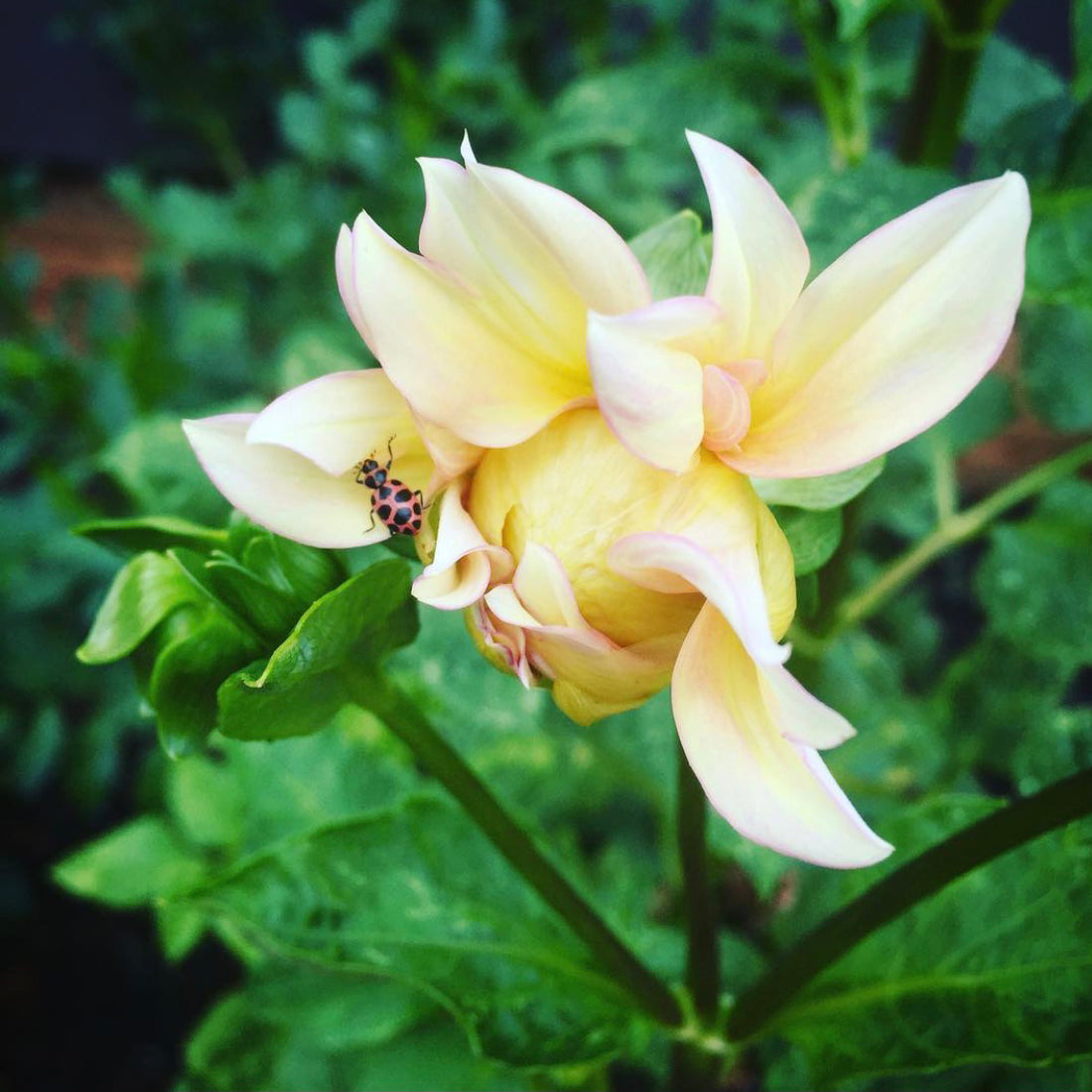
To Ladybug or Not to Ladybug
"A beneficial insect in the home garden, adult lady beetles can consume 50 aphids per day, while larvae can up to 10 to 25 per day!"

If you've ever dealt with aphids on your prized cut flowers at all, you'll know deciding whether to use ladybugs as a biological control is more complicated than meets the eye. Read more about the pros and cons on a resource provide by the Washington State University extension office.
As for us, to avoid any unintended ecological consequences of buying and releasing ladybugs where aphids are rampant, we decided to introduce more plants that provide habitats and food sources ladybugs like, such as pollen and sugary nectar in addition to, of course, their favourite pests (*crinch*) aphids!
Here is a list of flowers that we're growing, and that you can grow too, to keep those ladybugs coming back :)

Calendula
Chives
Cosmos
Dill
Fennel
Geranium
Marigold
Queen Anne's Lace
Statice
Sweet Alyssum
Yarrow


Clearly, we're trying quite hard to attract those tiny, cute ladybugs, yes? In addition to those, you can also grow angelica, butterfly weed, caraway, coreopsis, dandelion, tansy, and wild carrot!
Phew, I think that's most of the plants that ladybugs enjoy that we know of. Good news is they are all so beautiful and easy to grow. It will not be long before you spot those little spotted bugs hard at work in the garden!
